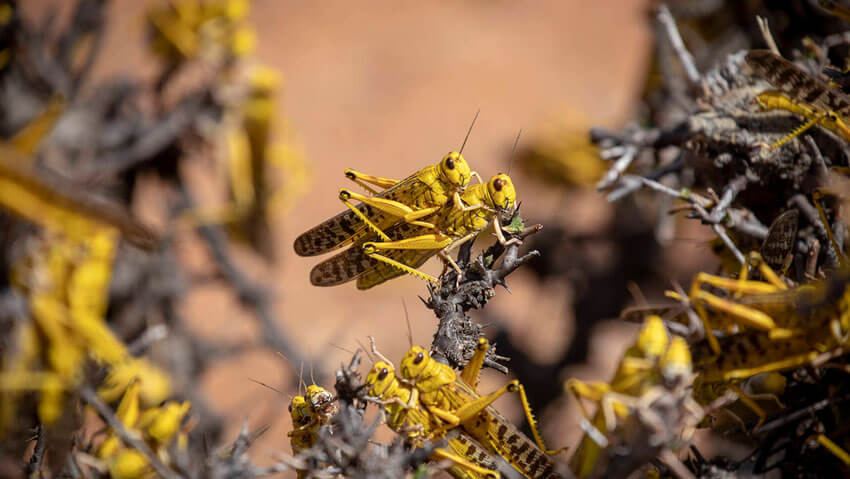Desert locusts that made their way into Uganda on Sunday have been sighted in Abim district, northeast of Moroto, bordering Acholi and Lango regions. Another swam of locusts was reported in Nabilatuk, south Karamoja.
There were also reports that the locusts had, by last evening, reached Katakwi in Teso. The Katakwi district chairperson, Walter Elakas, said locusts had invaded Paalam sub-county.
Opedo-angor village where Katakwi District Woman MP Violet Akurut comes from was among the seven villages attacked by the desert locusts.
‘‘The affected villages include Acoite, Ngariam, Akwarada, Amoro, Ngariam, and Akwarekia,’’ Elakas said.
By last evening, the locusts were reported in Rwoth hills, Abim, according to local district officials. The swarm suspected to have flown through Moroto entered Uganda via Kenya’s Lokiriama location in Loima sub-county.
Another swarm that entered Uganda via Kosikei along the Uganda-Kenya border was by yesterday reported being in Nabilatuk district, south of Karamoja and close to the Teso and Mt Elgon regions. The swarm is likely heading to Lake Bisina in Teso region, according to the experts.
The commissioner for entomology, Ambrose Masaba Gidudu, estimated the swarms in Nabilatuk to be 20,000-50,000 strong, saying there was little destruction of the vegetation.
Gidudu added that the locusts in Karamoja were feeding on selected acacia trees. The Abim Resident District Commissioner, Abim Mpimbaza Hashaka, said they were monitoring the situation, adding that a technical team is on the ground to ascertain where the locusts before taking action.
Hashaka appealed to residents to be calmly advising them not to eat the locusts because they could be harmful to human beings.
“People should avoid eating or even touching the locusts,” he noted, adding that they had been sprayed with insecticide in Kenya.
Uninvited guests
The desert locusts invaded the Amudat district in northeastern Uganda on Sunday morning. By yesterday morning, there were no signs of the locusts in Amudat and instead, they were encountered in Nabilatuk, about 50km from the Uganda- Kenya border.
According to Gidudu, the migratory desert locusts were seen in two sub-counties namely Loroo and Kalita in Amudat on Sunday. On the same day, the desert locusts were seen moving towards Nabilatuk and Nakapiripirit.
However, some of the locusts were seen swarming back to Amudat yesterday. Gidudu’s team toiled for most of yesterday as the locusts had become elusive to the surveillance teams. They later located the locusts in Nabilatuk district.
The invasion by the desert locusts is likely to have a negative impact on crops as well as food security which will likely have a ripple effect on the economy. The pastures for the pastoralists are also likely to suffer as well as their cattle. At the same time, the pasture for wildlife in Kidepo Valley National Park is going to thin out.
This is going to cause conflict between wild animals, particularly large mammals such as elephants, buffalo and giraffes, and humans. The animals are likely to stray from the park into land belonging to the communities in search of pasture, according to Sam Mwandha, the executive director of Uganda Wildlife Authority (UWA).
“The desert locusts are going to destroy vegetation, including pasture which will cause animals to suffer,” he said, adding that this is the reason the tourism ministry is part of the inter-ministerial committee on locusts.
On Sunday Dr. Ruhakana Rugunda, the Prime Minister called for calm and said they are ready to fight the locusts. Rugunda said a team of armed forces led by 2,000 Uganda People’s Defence Forces was on the ground. He said the team also has 85 rangers and wardens that have been assembled by UWA.
